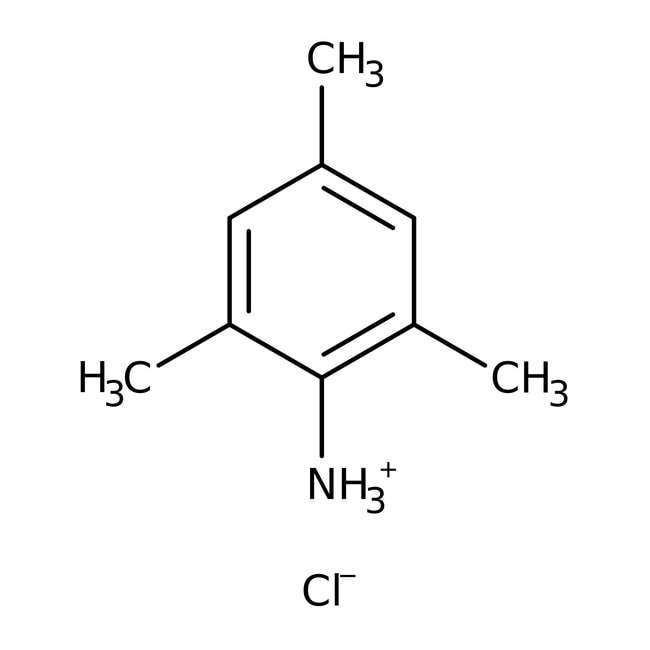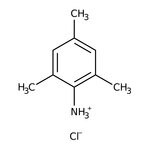Search Thermo Fisher Scientific
2,4,6-Trimethylaniline, 98%, Thermo Scientific Chemicals



2,4,6-Trimethylaniline, 98%, Thermo Scientific Chemicals
Chemical Identifiers
Specifications
Description
This Thermo Scientific Chemicals brand product was originally part of the Alfa Aesar product portfolio. Some documentation and label information may refer to the legacy brand. The original Alfa Aesar product / item code or SKU reference has not changed as a part of the brand transition to Thermo Scientific Chemicals.
2,4,6-Trimethylaniline is useful for the preparation of Grubbs′ catalyst. It is used as a precursor to dyes. It undergoes condensation reaction with glyoxal to prepare glyoxal-bis(mesitylimine). It is also involved in the preparation of 1,3-diketimines ligands by condensation with 1,3-diketones. Further, it is used for the production of Acid Blue 129 dye, which is useful in histochemistry studies. In addition to this, it serves as a building block to various bulky ligands.
Solubility
Slightly miscible with carbon tetrachloride. Immiscible with water.
Notes
Incompatible with strong oxidizing agents.
Figures
Documents & Downloads
Certificates
Frequently asked questions (FAQs)
Citations & References
Safety and Handling
Classification of the substance or mixture
CLP classification - Regulation(EC) No 1272/2008
Label Elements
Signal Word
Danger
Hazard Statements
H301 + H311 + H331 - Toxic if swallowed, in contact with skin or if inhaled
H373 - May cause damage to organs through prolonged or repeated exposure
Precautionary Statements
P260 - Do not breathe dust/fume/gas/mist/vapors/spray
P280 - Wear protective gloves/protective clothing/eye protection/face protection
P301 + P310 - IF SWALLOWED: Immediately call a POISON CENTER or doctor/physician
P302 + P350 - IF ON SKIN: Gently wash with plenty of soap and water
P304 + P340 - IF INHALED: Remove victim to fresh air and keep at rest in a position comfortable for breathing
P312 - Call a POISON CENTER or doctor if you feel unwell